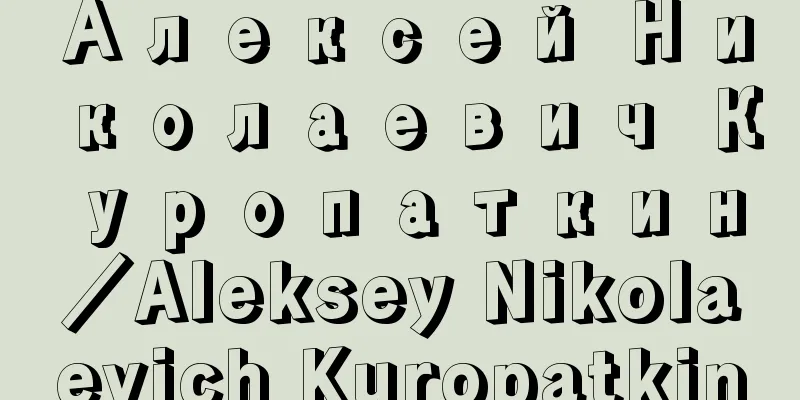Childcare - Ikuji

|
Caring for and raising children. Although "children" often refers specifically to infants, it can also be broadly taken to mean unborn fetuses, elementary school students, and junior high school students. Childcare is also used in the same sense as "child-rearing." However, it has been pointed out that "child-rearing," which was used in the early modern period, was replaced by "child-rearing" during the process of modernization, and was then replaced by "child-rearing" from the mid-1970s onwards, while "child-rearing" has come to be used with negative connotations, such as "child-rearing anxiety" and "child-rearing stress." Childcare is primarily carried out at home by parents or other guardians, but when this is not possible, it is provided by professionals in foster parents, infant homes, child welfare institutions, daycare centers, and other child welfare facilities. The purpose of childcare is to raise children who are healthy both physically and mentally. [Takashi Nakamura September 19, 2017] History of childcareChild-rearing methods and the attitudes of parents, communities, and society toward children have changed over time. The modern image of child-rearing in which children are raised in a small family with careful care from both parents, especially the mother, is not a universal one. Historically, children were often raised by non-working grandparents, servants, or other people in large, business-run "houses." [Takashi Nakamura September 19, 2017] Childrearing in the Edo PeriodA characteristic of parent-child relationships in the Edo period (early modern times) is the "discovery of children" as subjects for discipline. The Edo period was a time when many child-rearing books were written, and it was "a time when fathers raised their children." The background to the appearance of child-rearing books at that time was people's growing interest in raising and educating children and the existence of a readership that sought this, but the main readers of child-rearing books were fathers of the samurai class. In the Edo period, the purpose of child rearing was the socialization of "children for the family," especially "male heirs." Among the samurai class, who were particularly conscious about educating their children, raising boys was the role of the father as head of the household, and it had a public meaning of conveying to the son the responsibility of inheriting the "family." The Edo period can be said to be a time when fathers, as agents of socialization, raised "children for the family." On the other hand, women of the time, especially those of the samurai class, were expected to take care of their children according to the wishes of their husbands and fathers-in-law. Many books on women's instruction were published during the Edo period, but although they described the ideal image of a wife or bride, there were no virtues that mentioned the role of a mother. Women (mothers) were expected to give birth to and care for "children for the family" and "children who would be heirs," and the role of educating the children was considered the father's responsibility. In the Edo period, the idea of family, where the family name (trade name), property, and business were passed down from generation to generation, also existed among common people. Farmers and townspeople, parents, passed on experiential knowledge to their children from an early age through farm work and the family business, and helped them acquire the knowledge and skills necessary to take over the family business, thereby maintaining and continuing the family property and business. Furthermore, in the Edo period, when families and village communities had close ties, parents were expected to raise their children not only as "children for the family" but also as "children for the village." The experiential knowledge that parents passed on to their children was not limited to the knowledge necessary to take over the family business, but also included how to interact with neighbors, relatives, temples and shrines, village customs, and how to behave at weddings, funerals, and other ceremonial occasions. [Takashi Nakamura September 19, 2017] Childrearing in the Meiji PeriodIn the Meiji era, the situation surrounding child-rearing changed dramatically with the national strategy of rapid modernization and industrialization, the reorganization of the family system, and the introduction of the education system. The characteristics of this change can be summarized as follows: first, the role of the primary caretaker of children shifted from fathers to mothers, and second, with the emergence and spread of the public education system, the educational function of the family and community was relegated to the background. The modernization of education in the Meiji period began with the creation of a public education system through the promulgation of the School Ordinance in 1872 (Meiji 5). The emergence and spread of public education was a process of confining children within the framework of the modern school education system and educating "children for the nation." Home education was then "discovered" as something that could play a complementary role to school education, and attention began to be focused on mothers as the carriers of this role. As the construction of a modern nation and the training of citizens to support it emerged as national issues, the role of women in assuming household responsibilities assumed great significance, and women's domestic roles such as housework, childcare, and wifely support came to be considered as contributing to the development of the nation. While men became citizens of a modern nation by engaging in productive activities and military service, women were "indirectly" integrated as citizens by supporting those men's activities at home and raising the next generation. The ideology of "good wife, wise mother" rationalized this. During the Meiji period, child-rearing was carried out under a hierarchical social order of "state-school/family-children." Mothers assumed the responsibility for child-rearing as home educators who were subcontractors for school education, while fathers engaged in productive labor as breadwinners for the family, gradually reducing their involvement in child-rearing. [Takashi Nakamura September 19, 2017] Childrearing in the Taisho PeriodThe characteristics of the modern family began to be seen in the new middle class families of the Taisho period. As industrialization and urbanization progressed, the new middle class made a full-fledged appearance during the Taisho period. The new middle class is a class that occupies an intermediate class position, neither capitalist nor working class, and is characterized by intellectual labor, a salary-based income structure, and a moderate standard of living. The new middle class family is characterized by the separation of production and consumption, the strengthening of women's roles as housewives, and attention to the education of children. Because the new middle class needed to pursue a means of reproducing their own social status through the acquisition of an academic background through the institutionalized socialization device of school education, they became increasingly interested in the education and further education of their children (especially boys). In this way, new middle-class families believed that giving children academic ability would lead to an improvement in the family's standard of living, and so formed a gender-based division of roles, with childcare, along with housework, becoming the wife's domain. The norm that mothers should be responsible for childcare was also accepted by women themselves, along with the term "maternal love," which was linked to the translation of "motherhood" at the time. Also during this period, birth control using contraceptive technology and birth control through planned births progressed, and society moved toward low birth and low death rates. As a result, there was a growing awareness that children were "made," rather than "given" to. The views of children and discipline of the new middle class in the Taisho period were quite different from those of the Edo and Meiji periods. In premodern times, the view of "children for the family" was "children for the village community," while in the Meiji period it was "children as national power," and was backed by the family system. In these views, there was a clear distinction between the status of heirs and other children, and between men and women, and child socialization was dominated by status-controlling discipline based on patriarchal ideology. In contrast, the child-rearing of the new middle class in the Taisho period showed the beginnings of individual-oriented socialization in line with the child's nature and individuality. However, in the climate of Taisho democracy, the child-centered view of education and individual-oriented discipline ideas that were accepted by the intellectual class and part of the new middle class with modern civic consciousness did not spread any further at the time. On the other hand, in rural and fishing villages, nannies were hired and mothers engaged in productive labor, and child-rearing methods varied from region to region. Since many children lost their lives to illness or injury, emphasis was placed on breastfeeding and health management, which determined a child's survival. Furthermore, through child development rituals, not only family and relatives but also neighbors were involved in watching over the child's growth. The custom of choosing many foster parents, such as nursing parents, sash parents, adoption parents, godparents, and foster parents, can be said to be symbolic of communal child-rearing. [Takashi Nakamura September 19, 2017] Childrearing during the period of rapid economic growthWhat made the rapid recovery and economic development after World War II possible was the change in industrial structure brought about by technological innovation and the formation of the so-called "Japanese-style management." Industrialization under the postwar large-corporation system was based on the family with a gender-based division of labor, with the husband performing productive labor and the wife reproducing that labor force and shouldering all household responsibilities. The transformation of the postwar family is linked to changes in the value of children and in child-rearing. In an agricultural society, children were valued as a source of labor, successors to the family home, and security for their parents in old age. However, as the employment rate increased and urban lifestyles became more widespread, parents began to want to limit the number of children they had, give each child the highest quality education possible, and enable them to pursue advantageous careers in the future. This led to the spread of a child-rearing strategy of "having fewer children and raising them well." It was during this period that interest in "birth control" and "birth regulation" (i.e. contraception), which had already been seen among the new middle class and some intellectuals from the end of the Meiji era to the Taisho era, became widespread among the general public. It was not until the 1960s that the contraceptive use rate exceeded 40%, and the ratio of the birth control effects of abortion and contraception reversed. During the period of high economic growth and the age of mass consumption, the salaried family, which was formed mainly in urban areas, purchased durable consumer goods and the family model that pursued material wealth became the norm. In other words, the modern family was established, consisting of a father who was willing to become a "corporate warrior" and an "educational mother" who devoted all her time and energy to the education of her children. In the 1970s, after the period of high economic growth, the responsibility for raising children was left to the mother, and the situation of "fatherless" childcare, where fathers could not or would not take on the role of care, accelerated. The isolated childcare of full-time housewives and the long working hours of the breadwinner men are two sides of the same coin. The appearance and spread of childcare magazines after the 1970s was due to the weakening of personal networks such as blood ties and local ties amid the trend toward nuclear families and urbanization, and the increase in mothers who were struggling with the lonely task of raising children and could not rely on their husbands who were mainly working and had no time to be involved in childcare, and who began to seek knowledge and information about childcare through the media. Then, in the 1980s, the number of dual-income households increased amid the trend toward nuclear families, and the traditional modern family model that considered it best for mothers to be at home began to change little by little. [Takashi Nakamura September 19, 2017] Childcare since the 1990sFollowing the ratification of the Convention on the Elimination of All Forms of Discrimination against Women in 1985, the Equal Employment Opportunity Law was enacted in 1986, and the Childcare Leave Law was enacted in 1991 (enacted in 1992). In the late 1980s and 1990s, a trend toward a "gender-equal society" was born. There was also growing interest in joint childcare, in which mothers and fathers are involved in childcare together. On the other hand, the decline in the birth rate continued in the 1990s, and in 1997, for the first time in the history of vital statistics, the number of children (0-14 years old) fell below the number of elderly (65 years old and over), bringing the issue of low birth rates into the spotlight as a "social problem" that would determine Japan's future. Under these social circumstances, attention began to be paid to "fathers' participation in childcare" as a policy issue. The policy of "raising children with fewer children and more care" due to the declining birthrate has led to a demand for high-quality childcare, and mothers have become enthusiastic about early education, but at the same time, they have also become stressed and develop anxiety and neurosis about childcare. In addition, the "Men who do not take care of children are not called fathers" campaign proposed by the Ministry of Health and Welfare (now the Ministry of Health, Labour and Welfare) in 1999 was introduced as part of the government's measures to combat the declining birthrate, but it also contains a "gender-sensitive" message that the care role should be suitable for both men and women. In the 2000s, the idea of viewing fathers, relatives, neighbors, friends, nursery school and kindergarten specialists as a "childcare network" has also emerged. Due to these influences, the role of fathers is gradually shifting from the "father as authority" theory, in which fathers work outside the home to support their families and teach their children social norms at home based on gender role division of labor, to the "father as carer" theory, in which fathers cooperate with their partners to take care of their children and enjoy father-child interactions. On the other hand, cases of child neglect, where parents do not raise their children, and child abuse by parents are also on the rise. The causes of abuse are said to be stress in daily life, isolated child rearing, the emergence of "difficult children to raise," and generational transmission, and it is thought that the background to all of these is a weakening of the awareness of raising children in society. [Takashi Nakamura September 19, 2017] Parenting by menThe word "ikumen," which appeared in the 2000s, is a play on "ikemen," meaning a "cool" man who actively enjoys raising children. In the media, magazines aimed at men with children are published one after another, dramas and commercials are created with "ikumen" as the theme, and in the industry, "ikumen" goods such as strollers, baby carriers, and childcare bags that incorporate shapes and patterns that are easy for men to use are popular. This "ikumen" phenomenon has been brought about by the advent of a society with a low birth rate and an aging population, and the Japanese government's encouragement of fathers' participation in childcare as part of its measures to combat the low birth rate, the development of father research in developmental psychology, the rise of men's studies, the development of research on mothers' childcare anxiety centered on family sociology, and the development of the men's movement (men's liberation) in the 1990s. Although the childcare environment for men is being improved in terms of systems and policies, in reality, it is still a "dream" for fathers to take childcare leave, and it is difficult to even find time to care for children in daily life. Research on fathers' child-rearing has shown that fathers' daily play and caregiving activities have a positive impact on the emotional and social development of three-year-olds, and that wives' high regard for their husbands' participation in child-rearing and the sense that they are working together with their husbands to raise the child leads to reduced child-rearing anxiety for mothers, thus having a positive impact not only on children's development but also on mothers.Furthermore, it has also been made clear that fathers' participation in child-rearing has a significant impact on the fathers themselves, with fathers' physical and mental pain and distress decreasing the more frequently they participate in child-rearing. [Takashi Nakamura September 19, 2017] Home education"Home education," which was born as a complement to modern education in the Meiji period, has changed in form and continues to be a policy and social concern since the mid-1990s. First of all, in terms of policy, the role of the government and administration before the 1980s was to create the conditions for "home education," and the government maintained an attitude of respecting the policies of individual families regarding the content of home education. However, policies since the 1990s have been more proactive in guiding the values and styles of "home education," which were supposed to be based on each family's values and style, into specific, detailed and concrete directions. The 1998 Central Council for Education report is a typical example, which makes detailed and wide-ranging recommendations on how a family should be to develop children's "zest for life," such as increasing conversations between family members, eating meals together, getting children to do housework, and parents reading to young children. This trend did not stop, and provisions regarding home education were included in the Fundamental Law of Education. In other words, the following article was added: "Article 10: Parents and other guardians have the primary responsibility for their children's education and shall endeavor to help them acquire the habits necessary for life, foster a sense of independence, and promote the harmonious development of their mind and body." It was within this policy trend that the "Home Education Handbook" and "Home Education Notebook" were created and distributed, as well as the national "Early to Bed, Early to Rise, Eat Breakfast" campaign and the nationwide "Let's Talk to Our Children" campaign. While reflecting these policy trends, there has also been a rise in interest in "home education" in society more broadly due to other background factors. This phenomenon is the remarkable increase in mass media such as magazine articles, newspaper articles, and books that discuss the how-to's of "home education." For example, from the latter half of 2005 to 2006, business magazines launched a series of new magazines targeted specifically at "home education." What is more, it is notable that the content of these magazines is no longer specialized in intellectual abilities such as "academic ability for entrance exams," as was the case before the 1980s, but has instead shifted to internal and personality traits such as motivation, interest, and even interpersonal skills. [Takashi Nakamura September 19, 2017] Child rearing folkloreChild rearing does not begin after birth, but from the moment of conception. In particular, the obi celebration, which takes place around the fifth month, is a social acknowledgement of the pregnancy and carries with it the weighty meaning of socially acknowledging the fetus's right to life. Even in the early modern era, when infanticide was common, children who had undergone the obi celebration had to be raised. For pregnant women, the obi celebration is a social acknowledgement of their pregnancy, and from the time the obi is put on, they entered into a life of pregnancy taboos. Pregnancy taboos were expressed in the form of behavioral and food taboos for pregnant women, which also led to prenatal education. [Yuki Ofuji] Prenatal educationPrenatal education has been considered important since ancient times. It was especially strict from the fifth month, when fetal movement begins, around the time of the obi-iwai ceremony. Prenatal education was forbidden to attend funerals or see fires, and parents were warned against getting angry, crying, or startled, placing priority on mental stability. [Yuki Ofuji] BreastfeedingBreast milk was thought to be the best nutrition for a newborn's growth and was in accordance with the laws of nature, but in the days before powdered milk and cow's milk were developed, it was believed that the first time a baby was breastfed, it was bad for the baby, and so people gave the baby things like makuri (a seaweed called kaininso), butterbur root, licorice juice, and sugar water, in a ritual called removing fetal poison. Furthermore, the first feeding was not the baby's own milk, but the milk of someone who had given birth around the same time and was already breastfeeding. At this time, boys were given the milk of someone who had a daughter, and girls were given the milk of someone who had a boy, a custom that continued in various regions until around 1935 (Showa 10). This breastfeeding was called chichiawase or aichichi, and it was said that this would ensure the baby would grow up strong and that marriage would take place quickly. It was a highly magical practice, with the magical power of sex change being used to pray for the child's happiness. A person who is united through breastfeeding is called a breast-feeding parent or milk parent, and they form a temporary parent-child relationship with the newborn baby and stay with it for the rest of the baby's life. Substitutes for breast milk include gruel, suriko (ground rice flour), sweet sake soup, and kangi (a drink made in Okinawa by a mother chewing raw rice and straining it through a cloth). For the year leading up to the baby's first birth, the baby is called an infant and cannot be separated from milk. The idea that breast milk is the best nutrition for a newborn baby remained unchanged at least until around 1950 (Showa 25) after the Second World War. [Yuki Ofuji] Three-day celebrationA newborn baby is thought to be in a very unstable state, having just been taken from what might be called the spirit world into the human world. The seventh night is the most worrisome, and the seventh night is the first stage of whether the baby will survive in this world or not. The taboo period for childbirth is the heaviest until the seventeenth night, but Mitsume's third day birth room is considered especially important. This is because both mother and child are often in danger until the third day. On the third day celebration, the midwife is invited as the guest of honor, the newborn baby is bathed in water, and the baby is first dressed in a sleeved birth garment called Mitsumegimono. A meal is offered to the baby, and they eat together in the birth room. The third day celebration was considered an important hurdle, as it was the first ritual to accept the newborn baby into the human world. This ritual to approve the baby's entry into the human world was not just one, but had to be passed many times until the baby reached adulthood. In particular, detailed birth rituals in the birthing room were performed during the first month after birth before the baby's first visit to the shrine, and these rituals were used to monitor the baby's growth. [Yuki Ofuji] Seven NightsThe seventh night is considered an important day nationwide, and even in places where the third day celebrations are not held, many hold grand celebrations. The custom of naming a child on this day is nationwide. Naming a child also acknowledges the child's eligibility to participate in society as a full-fledged human being. Usually, the parents give the baby a name, but there are also many cases where midwives, matchmakers, child-blessing practitioners, and influential people act as godparents. The godparents act as temporary parents and maintain a parent-child relationship with the newborn baby for the rest of their lives. When a newborn baby is weak and unable to thrive, a priest is asked to act as a godparent, and the child is called a "moshiko" or "torigo." [Yuki Ofuji] First outingOn the seventh night or eleventh day, there are ceremonies called Idashihajime, Uide, and Dezome, in which the newborn baby is taken out of the birthing room and shown the light of day for the first time. The baby is then covered in a sugegasa (sedge hat) or diaper and worshipped at the household gods of the hearth, well, and toilet, as well as at bridges and riverbanks, where offerings of scattered rice, salt, and dried bonito flakes are made. In the Tohoku region, the newborn baby's forehead is marked with the character for dog in ink for boys and a circle in crimson for girls, called yasuko. This is an archaic word called ayatsuko, and is said to ward off evil spirits, but it is also a sign that the newborn baby has been recognized as the child of the gods. [Yuki Ofuji] Shrine visitThe date of the shrine visit varies depending on the region, and can be as early as the seventh night or as late as the 100th day. However, in most cases, it is held around 30 days for both boys and girls. The shrine visit is a ritual to have the gods recognize the newborn baby as a member of the shrine. At the same time, it was also the first social step of being recognized as a member of the village. The shrine visit was also called Hiake or Hinohare, and it was believed that on this day the taboo for newborn babies was lifted. In the past, the taboo for women who had given birth was set at 75 days, so women who had given birth do not participate, but rather the midwife, the matchmaker's mother, mother-in-law, mother of the family, relatives, etc. carry the newborn baby. The newborn baby is covered with kakegimono (noshime (male) or moyo (female) baby clothes) sent from the family home. In Miyagi, Fukushima, Niigata, Tochigi, Ibaraki, and Chiba prefectures, inagi is worn, while in Kanagawa and Yamanashi prefectures, obogino is worn, a sleeveless garment made of bleached cloth, which is still worn over the noshime of the haregi. In places where the idea of taboo around childbirth is strong, mothers do not go all the way to the shrine, but pray at the torii gate and then return home. On the way back from the shrine visit, they stop by relatives to celebrate the birth of the child by having shiraga (ohineri wrapped in white paper) tied to the strings of the baby's clothes or by having them place it in a mortar. At home, they celebrate by eating mochi (rice cakes) and red rice together. [Yuki Ofuji] First mealThe first meal celebration is usually held on the 100th to 110th day, but in some places it is held at 6 months. By the 100th day, the baby's neck will be strong and firm. Having a strong neck is a major turning point in growth, so it is called "100-day Kubisue" or "100-day Ichiryu-gui". It was also a ritual to confirm the baby's entry into the human world by feeding it the same food as adults except for milk. The mother's hometown presents the baby's rice bowl, chopsticks, and tray, which are presented in front of the baby, so it is also called Hashisoroe, Hashizome, or 100-day Mamakui. The tray is filled with red bean rice and a fish with head and tail attached, and a small plate is placed with a pebble picked up from the riverbed. The baby is allowed to lick it, called "stone's meal," because it is said to strengthen the baby's teeth, and the pebble is thought to represent the residence of the birth god. Giving oneself the chopsticks and rice bowls with which to feed oneself is a custom unique to Japan, and can be seen as the beginning of dietary discipline. [Yuki Ofuji] First New Year and First FestivalBefore World War II, people turned old on New Year's Day, so the first New Year for a newborn baby was a special celebration. There are still some examples of the custom of giving boys a hamayumi bow and girls a hagoita shuttlecock, which is still practiced today. The festival for both boys and girls is called "Firstborn's First Festival," and is celebrated with great pomp only for newborns. Home townspeople, relatives, foster parents, etc. give dolls and banners. In return, people give hishimochi (diamond-shaped rice cakes), chimaki (rice dumplings), kashiwamochi (oak leaf rice cakes), etc. It was also an opportunity for the newborn baby to enter society. [Yuki Ofuji] First BirthdayThe first year of life marks a major leap in human growth, as the baby is able to stand and walk, and so a celebration is held on a day called Mukaidoki, where rice cakes are pounded and relatives and acquaintances are invited to celebrate. If a baby makes it to the first year of life, this means that there is a good chance of a baby's growth, so the first birthday is celebrated nationwide. In various places, there is a custom of having a baby who begins to walk before birth carry a one-sho rice cake on its back and intentionally knock it over. In this way, special consideration is given to the rituals that are performed over and over during the first year of a baby's life to monitor the baby's growth. The rituals that accompany a child's growth have an educational function in themselves, but they are also a method of child-rearing. [Yuki Ofuji] Shichigosan celebrationDepending on the region, celebrations for children are not necessarily limited to Shichigosan, and in many cases, celebrations are held for the three and seventh years, or just the seventh year. However, the ages of three, five, and seven are important turning points in a child's development. Seven years old in particular is considered an important age for both boys and girls, marking the end of childhood. There was a custom of visiting the local shrine and becoming a member of the parishioners once again. [Yuki Ofuji] Temporary ParentIn Japan, in addition to biological parents and adoptive parents, there is a custom of having many foster parents. After birth, there are adoptive parents, nursing parents, godparents, and foster parents who take in the child when it is not yet grown up. [Yuki Ofuji] Ejiko and the babysitterThere is a custom in various regions of putting a newborn baby into a straw basket called Ejiko, Tsugura, or Izumi on the third day or seventh night after birth. Once the baby begins to crawl, a babysitter is assigned to it. [Yuki Ofuji] Other FolkloreThere are various incantations and superstitions in different places for many illnesses, such as night crying, colic, measles, and smallpox. Additionally, from Shikoku to the Seto Inland Sea area, the act of raising children is called "ko yarai." Yarai means to drive a child, and it refers to raising a child to be an adult by chasing and hitting the buttocks from behind. [Yuki Ofuji] Child-rearing styles among ethnic groupsThe scene where a baby horse begins to walk stomps right after birth is touching, but if a human baby has to rely entirely on the caregiver, not only does it walk, but even maintaining its survival is in danger. The characteristic of human babies is its immaturity, and therefore the weight of childcare is extremely large. Reports on "wild children" that have been discovered all over the world, that is, children who have grown up without a human care environment, show how important it is to undergo appropriate care at each stage of growth for both physical and mental growth. Furthermore, looking at child-rearing among ethnic groups around the world, we can see that there are parts that are common to humanity and distinctive parts of each culture. [Yokoyama Hiroko] Breastfeedingになったんです。 English: The first thing you can do is to find the best one to do. [Yokoyama Hiroko] defecationThe people of Rajput in North India did not tempt babies, but instead wrapped them in cloth and laid them. Sheets were used as tempts. There was no particularly strict defecation discipline, and as children grew older, they began to teach their parents how to excrete. In contrast, the people of Tanara, Madagascar, tried to discipline them quickly, even for the children who were about six months old. In general, in gentle discipline, children try to behave in such a way that others do not laugh at them. [Yokoyama Hiroko] Childcare staffになったんです。 English: The first thing you can do is to find the best one to do. Or sometimes, mothers carried their children on their own, and they worked on their own bodies. [Yokoyama Hiroko] Differences in childcare styles and cultureになったんです。 English: The first thing you can do is to find the best one to do. Meanwhile, the Arapeche people were patriarchal, and each buraku were made up of a single patriarchal relative, and livelihood activities such as farming through cooperation between relatives. The children were raised by dais, and the husband also cooperated with the child. If he was crying, he was given a milk immediately, and someone always watched over him. He was forbidden to be violent. Mead analyzed this as a peaceful and cooperative personality that was in their society. However, there is also arguing that a careful attitude should be taken when linking parenting styles with personality traits. [Yokoyama Hiroko] Rite of passageEach society creates milestones for children's growth, and they all check their growth up until then, and hold a rite of passage to pray for a successful future. According to traditional Chinese Han Chinese customs, on the third day there was a "San Dynasty" where the newborn was washed and then worshiped the family's gods and Buddhas and ancestors. In the first month of the "Full Moon", the child was shaved, and worshiped as well. The first birthday was called "Zhou Zhou", and after worship, several items were arranged and the children took it, which was then predicted the future. For each celebration, relatives and friends gathered together to bring gifts, and a feast was held. になったんです。 English: The first thing you can do is to find the best one to do. [Yokoyama Hiroko] diseaseMany methods have traditionally been used to protect children who are prone to death due to illness or accidents. The practice of using childhood names with animal names or strange meanings as children was widely distributed around the world, but this was to avoid the attention and jealousy of evil. It is also common to wear talismans. The faith of the gods who protect children is especially known. [Yokoyama Hiroko] "The future of parent-child relationships" (2004, Keisoshobo) compiled by Ariga Miwako, Shinome Kiyomi, and Tokyo Women's University Women's University Research Institute ( 2004, Keisoshobo) ▽ "Honda Yuki, "The narrow path of "home education": mothers who are forced to raise their children" (2008, Keisoshobo)" ▽ "Modern families and child-rearing by Samurai Mikako (2014, Yoshikawa Kobunkan)" ▽ "Hiraki Noriko and Kashiwagi Keiko, "From anxiety and anger to the creation of new relationships" (2015, Kaneko Shobo)" ▽ "E.H. Erickson, translated by Nishina Yayoi, "Infant childhood and society I" (1977, Misuzu Shobo)" ▽ "Hara Hiroko, Children's Cultural Anthropology (1979, Shobunsha)" ▽ "Hildred Geatz, translated by Toya Osamu and Ogane Takeshi, "The Javan Family" (1980, Misuzu Shobo)" ▽ "Oto Yuki, "Children's Folklore: Raising them fully" (1982, Kuso-kuni culture)" ▽ "Yanagida Kunio and Hashiura Yasuo, "Volume of Professions" (1984, Kokusho Kankokai)" ▽ "Oto Yuki, "Children's Child" (1985, Iwasaki Bijutsusha)" ▽ "Collection of Japanese Professions and Training Materials" (2008, Japan Book Center)" ▽ "Yoshida Teigo, "Exploring the Unexplored Ethnicity: A Lost World" (Shikoku Shisosha, Contemporary Liberal Arts Bunko)" [Reference items] | | | | | | | | | | | Seven | | | | | | | | | | | | | | | | | | | |Source: Shogakukan Encyclopedia Nipponica About Encyclopedia Nipponica Information | Legend |
|
子どもの世話、養育をすること。「子ども」はとくに乳幼児をさすことが多いものの、出生前の胎児や小学生・中学生などに広くとらえられることもある。また、育児は「子育て」と同じような意味で用いられている。しかし、近世に用いられた「子育て」が近代化の過程で「育児」にとってかわり、その後、1970年代なかば以降に「子育て」にとってかわられ、他方の「育児」は「育児不安」や「育児ストレス」など否定的な色合いを帯びて使われるようになってきたという指摘もある。 育児は主として家庭において、親など保護者の手によって行われるが、その実現が不可能な場合には、里親や乳児院、児童養護施設、保育所などの児童福祉施設等において、専門家によって行われる。育児の目的は、心身ともに健康な子どもを育てることにある。 [中村強士 2017年9月19日] 育児の歴史育児の方法や、子どもに対する親、地域、社会の人々の意識は時代によって変化してきた。子どもが小さな家族のなかで、両親とくに母親の丁寧な養育のもとに育てられるという現代の子育てのイメージは普遍的なものではない。歴史的には大きな「家」という経営体のなかで、非労働力である祖父母や、奉公人など他者に育てさせることも多かった。 [中村強士 2017年9月19日] 江戸期の育児江戸期(近世)の親子関係の特徴としては、しつけの対象としての「子どもの発見」があげられる。江戸期は多くの育児書が書かれた時代であり、「父親が子どもを育てた時代」であった。当時の育児書登場の背景には、子どもを育て教育することへの人々の関心の高まりとこれを求める読者層の存在があるが、育児書のおもな読み手は武士階層の父親であった。 江戸期において子育ての目的は、「家にとっての子ども」、とくに「跡継ぎとしての男子」の社会化であった。なかでももっとも意識的に子どもの教育を行っていた武士階層では、男子の養育は家長としての父親の役割であり、「家」の継承責任を子に伝える公的意味をもっていた。江戸期は、父親が社会化の担い手として「家にとっての子ども」を育てた時代といえる。 他方、当時の女性、とくに武士階層の女性に要請された育児は、夫や舅(しゅうと)の意思に従って子どもの世話にあたることであった。江戸期には女訓書が多数出版されたが、そこにはあるべき「妻」「嫁」の姿は書かれているものの、母としての役割に言及した徳目は存在しなかった。女性(母親)に期待されていたのは「家にとっての子ども」「跡継ぎとしての子ども」を産み、世話する役割で、子どもの教育役割は父親の責務とされていたのである。 江戸期において、家名(屋号)・家産・家業の世代的伝達という家意識は庶民の間にも存在した。農民や町人の親たちは、子どもに幼少時から農作業や家業を通して経験知を伝達し、家業を継ぐために必要な知識、技術を習得させ、家産や家業の維持・存続を図っていった。また、家と村落共同体とが密接な関係をもっていた江戸期において、「家にとっての子ども」だけでなく「村にとっての子ども」を育てることも要請した。親が子どもに伝達した経験知は、家業を継ぐために必要な知識にとどまらず、隣近所や親族、寺社とのつきあい方、村のしきたりや冠婚葬祭時のふるまい方などであった。 [中村強士 2017年9月19日] 明治期の育児明治期になると、急速な近代化・産業化の推進という国家戦略、家制度の再編、そして学制の登場により子育てをめぐる状況は大きく変容した。その特徴を要約すれば、第一に、子どもの主たる担い手が父親から母親に移行した点、第二に、公教育制度の登場と普及に伴い、家や共同体の教育機能が後方に退いた点があげられる。 明治期の教育の近代化は、1872年(明治5)の学制公布による公教育制度の創出から始まった。公教育の登場と普及は、近代の学校教育制度の枠内に子どもを囲い込み、「国家にとっての子ども」を養成する過程であった。そして、学校教育の補完的役割を担うものとして家庭教育が「発見」され、その担い手として母親が注目され始めた。 近代国家の建設とそれを支える国民の養成が国家的課題として浮上するなかで、家庭責任を担う女性の役割が重要な意味をもち、家事・育児・内助といった女性の家庭内役割が国家の発展に寄与するものと考えられるようになった。男性が生産活動や兵役に従事することによって近代国家の国民となる一方、女性は、その男性の活動を家庭において支え、次世代を育成することによって「間接的に」国民として統合されていった。それを合理化するのが「良妻賢母」のイデオロギーであった。 明治期の育児は、「国家―学校/家庭―子ども」というタテ社会の統制秩序のもとで、母親が学校教育の下請機関化した家庭教育の担い手として育児責任を担うようになる一方、父親はもっぱら一家の稼ぎ手として生産労働に従事し、子育てへの関与を徐々に後退させていった。 [中村強士 2017年9月19日] 大正期の育児近代家族の特徴は、大正期における新中間層の家族においてみられるようになった。産業化と都市化が進展するなかで、大正期になると新中間層が本格的に登場した。新中間層とは、資本家でも労働者階級でもない中間の階級的位置を占める階層であり、頭脳労働、俸給という所得形態、生活水準の中位性を特徴とする。 新中間層の家族は、生産と消費の分離、主婦としての女性の役割の強化、子どもへの教育的配慮といった特徴をもつ。新中間層は、学校教育という制度化された社会化装置による学歴の獲得を通して、自らの社会的地位を再生産する手段を追求する必要があったため、子ども(とくに男子)の教育・進学への関心を高めていった。 このように新中間層の家族は、子どもに学力をつけることが家族の生活向上に結び付くと考え、性別役割分担を形成し、家事とともに育児は妻の領域となった。母親が育児を担うという規範は、当時の翻訳語である「母性」と結び付いた「母性愛」ということばとともに、女性自身にも受け入れられていく。またこの時期、避妊技術を用いた受胎調節、計画出産による産児制限が進み、少産少死の社会へと移行していった。その結果、子どもは「授かる」のではなく「つくる」との意識が強まっていく。 大正期の新中間層の子ども観やしつけ思想は、江戸期から明治期にかけてのそれらとはかなり異なっている。前近代における「家にとっての子ども」「村落共同体にとっての子ども」や明治期の「国力としての子ども」と家制度に裏付けられた「家にとっての子ども」観においては、跡継ぎとそれ以外の子、あるいは男女の地位の差別化が明確であり、子どもの社会化は、家父長制的イデオロギーに基づく地位統制的しつけが主流であった。これに対して、大正期の新中間層の育児には、子どもの本性・個性に沿った個人志向的な社会化の萌芽(ほうが)をみることができる。とはいえ、大正デモクラシーの風潮のなかで、近代的市民意識をもった知識層、新中間層の一部で受け入れられた子ども中心主義的教育観や個人志向的しつけ思想は、当時それ以上には広がらなかった。 他方、農村や漁村などでは子守を雇い、母親も生産労働に従事するなど、育児の方法は地域によって多様であった。病気やけがなどで子どもが命を落とす場合も多く、子どもの生存を左右する授乳や健康管理が重視された。また子どもの成長儀礼を通して、家族、親族だけでなく近隣の人々もかかわって子どもの成長を見守った。乳付(ちづ)け親や帯の親、取上げ親、名付け親、拾い親など多くの仮親(かりおや)をとる風習があったのは、共同育児の象徴といえる。 [中村強士 2017年9月19日] 高度経済成長期の育児第二次世界大戦後の急速な復興と経済発展を可能にしたのは、技術革新による産業構造の変化と、いわゆる「日本的経営」の形成である。戦後大企業体制下の産業化は、生産労働を担う夫と、その労働力を再生産し、家庭責任を一身に担う妻という性別役割分業家族を基盤とするものであった。 戦後家族の変容は、子どもの価値や子育ての変化とも連動する。農業中心社会においては、子どもは労働力、家の跡継ぎ、親の老後保障としての意味をもっていた。しかし、雇用者比率の増大と都市的ライフスタイルの浸透のなかで、子どもの数を制限してひとりひとりの子どもにできるだけ質の高い教育を与え、将来有利な職業につかせたいとする親の意識が生まれた。そこから「少なく産んでよりよく育てる」育児戦略が広がりをみせた。 すでに明治の終わりから大正期に、新中間層や知識人の一部にみられた「産児制限」「産児調節」(=避妊)への関心が大衆化したのはこの時期である。避妊実行率が4割を超え、中絶と避妊の出生抑制効果の割合が逆転するのは、1960年代以降のことであった。 高度成長期の大衆消費時代を背景に都市部を中心に形成されたサラリーマン家族が耐久消費財を買いそろえ、物質的豊かさを追求する家族モデルが一般化した。すなわち、「企業戦士」となることをいとわぬ父親と、時間と労力のすべてを子どもの教育に費やす「教育する母親」の組み合わせからなる近代家族の定着である。 高度成長期以降の1970年代には、子どもの養育責任は母親の手にまかされ、父親たちはケア役割を担えない・担わないという「父親不在」の育児状況が加速していく。専業主婦の孤立した育児と稼ぎ手男性の長時間労働は、メダルの表裏の関係にある。1970年代以降の育児雑誌の登場と普及は、核家族化、都市化の進行のなかで、かつての血縁・地縁といった人的ネットワークが希薄化したことや、仕事中心で子育てにかかわる余裕のない夫にも頼れず孤独な子育てに悩み、育児の知識や情報をメディアを通して入手しようとする母親たちが増え始めたことに起因している。そして1980年代になり、核家族化のなかで共働き家庭が増え、母親が家庭にいることを最良とする従来の近代家族モデルは少しずつ変容し始めた。 [中村強士 2017年9月19日] 1990年代以降の育児1985年(昭和60)の「女性差別撤廃条約」の批准を契機として、1986年に「男女雇用機会均等法」が施行され、1991年(平成3)には「育児休業法」が制定(1992年に施行)されるなど、1980年代後半から1990年代には「男女共同参画社会」への潮流が生まれた。そして母親同士や父親もともに子育てにかかわる共同育児への関心が高まりつつあった。その一方、1990年代は出生率の低下がいっそう進行し、1997年には人口動態統計史上初めて、年少人口(0~14歳未満)が高齢者人口(65歳以上)を下回るなど、少子化問題が日本の将来を左右する「社会問題」としてクローズアップされた。このような社会状況のもとで、政策課題としても「父親の育児参加」に注目が集まるようになった。少子化による「少なく大事に育てる」という方針は、質の高い育児を求めるようになり、母親は早期教育に熱心になる一方でストレスを感じて育児不安や育児ノイローゼを生み出すようにもなる。また、1999年に厚生省(現、厚生労働省)が提唱した「育児をしない男を、父親とは呼ばない」キャンペーンは国による少子化対策の一環として登場したものであったが、そこにはケア役割は男女どちらにも適されるべきという、「ジェンダーに敏感な」メッセージもみられる。2000年代に入ると、父親・親族・近隣・友人・保育園や幼稚園の専門家などを「育児ネットワーク」ととらえる考え方も出てくる。これらの影響により、父親の役割についても性別役割分業に基づき外で働いて家族を扶養し家庭では子どもに社会規範を教えるという「権威としての父親」論から、パートナーと協力しあって子どもの身の回りの世話をし父子の交流を楽しむという「ケアラーとしての父親」論にしだいに移りつつある。 他方で、親が子どもの養育を行わない育児放棄(ネグレクト)や親による子どもへの虐待なども増えている。虐待の要因には、生活上のストレスや孤立した育児、「育てにくい子」の出現、世代的連鎖が指摘されており、いずれもその背景として社会で子育てをするという意識が希薄になっていることが考えられる。 [中村強士 2017年9月19日] 男性による育児2000年代になって登場した「育メン」ということばは「イケメン」をもじったことばであり、育児を積極的に楽しむ「イケてる」男性という意味がある。メディアにおいては、子どもをもつ男性を対象とした雑誌が次々に発刊されたり、「育メン」を題材にしたドラマやコマーシャルが作成されたり、産業界では男性が使いやすい形状や柄を取り入れたベビーカー(乳母車)、ベビーキャリア(抱っこひも)、育児バッグなどの「育メン」グッズが流行している。このような「育メン」現象をもたらしたのは、少子高齢化社会の到来により、日本政府が少子化対策の一貫として始めた父親の育児参加の奨励、発達心理学における父親研究の発展、男性学の台頭、家族社会学を中心とした母親の育児不安研究の発展、1990年代の男性運動(メンズリブ)の醸成などがあげられる。制度・政策的には男性の育児環境が整ってきているとはいえ、現実的には父親が育児休暇を取得するのは「夢」であり、毎日の生活のなかで育児時間を確保するのでさえ困難といわざるをえない。 父親の育児に関する研究では、父親の日常的な遊びや世話行為が3歳児の情緒的および社会的発達にポジティブな影響を与えていることや、妻が夫の育児参加を高く評価して夫と協働で育児をしているという実感を得られていることが母親の育児不安軽減につながっていることなど、子どもの発達だけでなく、母親にもプラスの影響を与えていることがわかっている。さらに、父親の心身の苦痛や苦悩が父親の育児参加が頻繁であるほど低くなるなど、父親の育児参加は父親自身にも大きな影響を与えていることも明らかになっている。 [中村強士 2017年9月19日] 家庭教育明治期の近代教育の補完として誕生した「家庭教育」は、その形を変えつつも、1990年代なかば以降もなお政策的・社会的関心事になっている。まず政策的には、1980年代以前の政府・行政が果たすべき役割は、あくまで「家庭教育」の条件整備にあり、その中身については個々の家庭の方針を尊重するという姿勢が保たれていた。しかし、1990年代以降の政策は、それぞれの価値観やスタイルに基づいて行われるべきものとされていた「家庭教育」の価値観やスタイルを、特定の、かつ事細かに具体的な方向へと、より積極的に誘導していくようになる。1998年の中央教育審議会答申がその典型であり、子どもの「生きる力」を伸ばす家庭のあり方として、家族間の会話を増やす、いっしょに食事をとる、子どもにも家事をさせる、幼児に親が読み聞かせをする等々の、細かく多岐にわたる提言がなされている。このような流れはとどまることなく、教育基本法にも家庭教育に関する条文を盛り込むことになる。すなわち「第10条 父母その他の保護者は、子の教育について第一義的責任を有するものであって、生活のために必要な習慣を身に付けさせるとともに、自立心を育成し、心身の調和のとれた発達を図るよう努めるものとする」という条文が追加されたのである。「家庭教育手帳」や「家庭教育ノート」の作成・配布、「早寝早起き朝ごはん」国民運動や「子どもと話そう」全国キャンペーンはこの政策動向のなかで進められたものである。 こうした政策動向を反映しつつも、それとは異なる背景要因によって、より広く社会全般において「家庭教育」への関心が高まっている。「家庭教育」のハウツーを語る雑誌記事・新聞記事や書籍などのマスメディアの顕著な増加という現象である。たとえば、ビジネス系雑誌が「家庭教育」にターゲットを絞った新系統の雑誌を2005年(平成17)後半から2006年にかけて次々に創刊している。しかも、その内容は1980年代以前のような「受験学力」的な知的能力に特化したものではなく、意欲や関心、さらには対人能力などの内面的・人格的な諸特性に変化していることが特徴的である。 [中村強士 2017年9月19日] 育児の民俗育児は生まれ出てからではなく、身ごもったときからすでに始まっている。とくに5か月目ごろに行われる帯祝いは、妊娠の社会的な承認であり、胎児の生存権を社会的に認めるという重い意味があった。近世の間引が多く行われた時代でも、帯祝いを済ませた子供は育てねばならなかった。帯祝いは妊婦にとっては妊娠の社会的な承認であり、着帯のころから妊娠の忌みの生活に入るものであった。妊娠の忌みは、妊婦の行動上の禁忌や食物上の禁忌という形で示されたが、それは胎教にもつながるものであった。 [大藤ゆき] 胎教胎教は昔からたいせつなものと考えられてきた。とくに胎動が始まる5か月以後、帯祝いを済ませたころから胎教を厳しくした。葬式に立ち合うこと、火事を見ることなどを禁じ、また怒る、泣く、驚くことを戒め、精神的な安定を第一とした。 [大藤ゆき] 乳付け母乳が生児の成長にとって最上の栄養物であり、自然の理にもかなっていると考えられていたけれども、粉乳や牛乳の発達しなかった時代には、初めての乳はよくないとし、胎毒下ろしといって、マクリ(海人草(かいにんそう)という海藻)やフキの根、カンゾウ(甘草)の汁、砂糖水などを飲ませた。そして最初の授乳は生母の乳でなく、同じころに出産をしてすでに授乳している人の乳を飲ませた。このとき男の子には女の子をもっている人、女の子には男の子をもっている人の乳を飲ませるという風が、1935年(昭和10)ごろまで諸地方で行われていた。この乳付けをチチアワセ、アイチチなどといって、こうするとじょうぶに育つ、縁組みが早いなどという。性の転換による呪力(じゅりょく)によって、子の幸いを願うという多分に呪術的なものである。授乳を縁として結ばれる人を乳付け親とか乳親(ちおや)といい、生児と仮の親子関係を結んで終生つきあった。母乳の代用品としては、重湯、スリコ(米の粉をすったもの)、甘酒の汁、カンギイ(沖縄地方で生米を母がかんで布で漉(こ)したもの)などを用いた。初誕生を迎えるまでの1年間は、乳児とよばれるように、乳と切り離すことはできない。母乳が生児にとって最良の栄養物であるという考え方は、少なくとも第二次世界大戦後の1950年(昭和25)ごろまでは揺らぐことがなかった。 [大藤ゆき] 三日祝い生まれたばかりの子供は、霊界ともいうべきところから人間界に取り上げられたばかりで、非常に不安定な状態にあるものと考えられていた。とくに生後7日間はその心配がもっとも大きく、七夜(しちや)が、まずこの世に生存するかどうかの一段階になっている。産の忌みがいちばん重いのも一七夜(ひとしちや)までであるが、そのなかでもミツメの三日産屋(うぶや)はとくにたいせつと考えられていた。それほど3日までは母子ともに危険な状態が多かったのである。三日祝いには産婆を正客として招いて、生児に湯を使わせ、初めてミツメギモノという袖(そで)のある産着を着せる。赤子にも膳(ぜん)を供えて産室で共食する。三日祝いは、生児を初めて人間界へ受け入れる最初の儀礼として、たいせつな関門と考えられていた。この人間界への加入を承認する儀礼は、1回だけでなく、成年になるまで何回となく経なければならなかった。とくに宮参りまでの生後1か月の、産屋に伴う出産の儀礼は細かく行われ、儀礼によってその成長を確かめてきた。 [大藤ゆき] 七夜七夜は全国的にたいせつな日と考えられて、三日祝いをしない所でも、七夜の祝いは盛大に行う所が多い。この日に名付け祝いをする風は全国的である。命名をするということは、子供が一人前の人間として社会に参加する資格を承認することでもある。名前は普通は親がつけるが、産婆、仲人(なこうど)親、子福者(こぶくしゃ)、有力者などが名付け者として命名する例も多い。名付け親は仮親として、生児とは一生親子の関係をもつ。生児が弱くて育たないときに、神職に名付け親になってもらうのを、申し子とかトリゴとかいう。 [大藤ゆき] 初外出七夜または11日目に、イダシハジメ、ウイデ、デゾメなどといって、生児を初めて産室から出して日の目を見せる儀礼がある。菅笠(すげがさ)やおむつを生児にかぶせて、家々の神々である竈(かまど)神、井戸神、厠(かわや)神、また橋や川端などに参って、散米、塩、かつお節などを供える。生児の額には、東北地方ではヤスコといって、男の子には鍋墨(なべずみ)で犬の字を、女の子には紅で丸印をつける。これは古語のアヤツコ(綾つ子)で、悪魔を払うためといわれているが、生児が神の子として承認されたしるしでもある。 [大藤ゆき] 宮参り宮参りの日取りは地方によってまちまちで、早いのは七夜から、遅いのは100日目まである。しかし、男女児ともに30日前後という例が多い。宮参りは生児を神に氏子として承認してもらう儀礼である。同時に、氏子となれば村の一員として認められるという第一段の社会的な手続でもあった。宮参りはヒアケとかヒノハレともいうように、生児の忌みはこの日でハレルものとされていた。産婦の忌みは古くは75日としたので、産婦は参加せず、産婆や仲人の女親、姑(しゅうとめ)、実家の母、親戚(しんせき)などが抱いて参る。生児には、実家から届けた産着のノシメ(男)やモヨウ(女)のカケギモノをかける。宮城、福島、新潟、栃木、茨城、千葉県などではイナギ、神奈川、山梨県ではオボギノという晒(さらし)の袖なしを、いまでもハレギのノシメなどの上に着せる。産の忌みの観念の強い所では、社前まで行かず、鳥居参りといって鳥居の所で参って帰る。宮参りの帰りには、親戚に寄ってシラガ(白紙に包んだオヒネリ)を産着の紐(ひも)に結んでもらったり、臼(うす)に入れてもらうなど子の縁起を祝う。家では餅(もち)や赤飯で祝い、共食をする。 [大藤ゆき] 食い初め食い初(ぞ)めの祝いは、100日目から110日目にする所が多いが、6か月目に行う所もある。100日目には生児の首もすわってしっかりしてくる。首がすわるということは、成長の大きな節目なので、「百日のクビスエ」とか「百日の一粒食い」などという。乳以外の大人と同じ物を食べさせることによって、一段と人間界への仲間入りを確認する儀礼でもあった。母の里方から生児の茶碗(ちゃわん)、箸(はし)、膳などをそろえて贈って生児の前に供えるので、ハシソロエ、ハシゾメ、百日のママクイなどともいう。膳には小豆飯(あずきめし)に尾頭付きの魚をつけ、小皿には川原から拾ってきた小石を皿にのせ、「石のおさい」といってなめさせるのは、歯がじょうぶになるためというが、小石は産神の依代(よりしろ)の意と思われる。自分を養う自分の箸、茶碗を与えるというのは、日本独特の習俗であり、食生活のしつけの始まりともいえる。 [大藤ゆき] 初正月・初節供第二次世界大戦前は正月で年をとったので、生児が初めて迎える初正月には特別の祝いの意味があった。男児には破魔弓(はまゆみ)、女児には羽子板を贈る風が現在も行われている例もある。節供は男女ともに「初子の初節供」といって、初生児だけが盛大に祝われている。里方や親戚、仮親などから人形や幟(のぼり)を贈る。返礼として菱餅(ひしもち)やちまき、柏餅(かしわもち)などを返す。生児の世間への仲間入りの機会でもあった。 [大藤ゆき] 初誕生満1年というのは立ち歩きができるという、人間としての飛躍的な成長のときなので、ムカイドキなどといって、餅を搗(つ)き親類知己を招いて祝う。満1年まで無事に育てば、ひとまず成長の見通しもたつので、初誕生は全国的に祝われている。誕生前に歩き出す子には、一升餅を背負わせてわざと倒す習俗が各地にある。このように生後1年間は、特別の心遣いのもとに儀礼を重ねて、その成長を確かめてきた。子供の成長に伴う儀礼は、それ自身教育的機能をもっているが、同時に一つの育児法でもあった。 [大藤ゆき] 七五三祝い子供の祝いは地方によってはかならずしも七五三とは限らず、三つと七つ、あるいは七つだけを祝う例が多い。しかし3歳、5歳、7歳は子供の成長にとってたいせつな節目である。とくに7歳は男女ともに幼年期の終わりとして重要な年齢とされている。氏神に参って改めて氏子入りをする習慣があった。 [大藤ゆき] 仮親日本には生みの親や養い親のほかに、多くの仮親をもつ風習がある。出生後一人前になるまでに、取上げ親、乳付け親、名付け親、子が育たぬときに拾ってもらう拾い親などがある。 [大藤ゆき] エジコと子守生後3日目または七夜に、生児をエジコ、ツグラ、イズミという藁(わら)製の籠(かご)に入れる風習が各地にある。はい出すようになると子守をつける。 [大藤ゆき] その他の民俗夜泣き、疳(かん)の虫、麻疹(ましん)(はしか)、疱瘡(ほうそう)など多くの病気には、各地に種々の呪法(じゅほう)や俗信がある。 また四国から瀬戸内海周辺にかけて、子供を養育することを「児(こ)ヤライ」という。ヤライは追い立てることで、子供の臀(しり)を後ろから追いたたきながら一人前に育て上げることを意味している。 [大藤ゆき] 諸民族にみられる育児様式誕生直後の馬の赤ん坊がおそるおそる歩き出すシーンは感動的だが、人間の赤ん坊は歩くことはおろか、栄養摂取も排泄(はいせつ)処理もすべて養育者に全面的に頼らねば、その生存の維持さえ危うい。人間の嬰児(えいじ)の特徴はその未熟性にあり、そのために育児のもつ比重は非常に大きい。これまで世界各地で発見されてきた「野生児」、つまり人間的養育環境が得られずに育った子供に関する報告は、成長の各段階において適当な養育を経ることが、人間としての心身両面での成長にとっていかに大切かを示している。また、世界の諸民族における育児をみると、人類として共通している部分と、それぞれの文化に特徴的な部分のあることがわかる。 [横山廣子] 授乳母親の最初の授乳に際して伝統的に特別の処置がとられていたことが知られている。北米先住民のスー(ダコタ)の人々では、初乳は毒だとされ、新生児が最初に飲まされるのは野草などの汁であった。タイ人のかつての慣習は、生後3日間は母乳を与えず、蜂蜜(はちみつ)などを食べさせるというもので、母親が初めて授乳するときには、年配の婦人にまず乳を吸ってもらう儀式が行われた。ひとたび授乳が始まると、どの社会でも伝統的には授乳時間など気にせずに子供が欲しがるときに飲ませるのが一般的であった。そして、離乳についても特定の時期を意識することなく、次子の誕生まで授乳が続けられる場合が多かった。また、早くから乳以外の食物が並行して与えられることもあり、そのような社会では離乳は比較的問題なく果たされた。また、乳首に異物を塗るなどのくふうもよくみられた。人工乳の導入に伴って計画的授乳が普及したが、最近では古来からの融通性のある母乳による授乳が、母子の心身衛生上、優れていると見直されている。 [横山廣子] 排便北インドのラージプートの人々は、赤ん坊におしめをせず、布にくるんで寝かせておいた。シーツがおしめがわりになっていた。とくに厳しい排便のしつけはなく、子供は成長するにつれて排泄を親に教えるようになった。それに対し、マダガスカルのタナラの人々は、生後半年ほどの子供のそそうに対してさえ厳罰を与え、早くしつけようとした。一般に緩やかなしつけにおいては、子供が他人から笑われないようにふるまおうとするのをしつけの原動力としている。 [横山廣子] 育児担当者伝統的社会では、乳児にとって第一の養育者が母親であることは、例外的な場合を除いてほとんどの社会に共通していた。しかし、日本でも江戸時代に武家を中心にみられたが、実母にかわって乳母(うば)が養育することが、社会の一部の上層においてみられる場合があった。現代社会では、仕事をもつ母親のために集団保育施設が発達し、乳児を含めた保育が行われている。伝統的社会では、離乳後も母親が主たる育児担当者であることが一般に多いが、サモアでは6、7歳の同じ家に住む少女たちが中心となってその役目を引き受けた。またサモアでは大家族が普通で、家に大人の女性が何人もいるため、母子の密着した関係は存在しなかった。母親が戸外に出て働かねばならないときの乳幼児の世話の問題には、世界各地で伝統的にいろいろな解決法がとられてきた。手のあいている者に子守を頼む場合、多くの社会が年配者に限らず、乳幼児の兄や姉にあたる子供たちにそれを任せてきた。子供を動けないように籠(かご)や板に縛り付けておくこともあった。あるいは母親が子供を背負うなど、自分の体につけて働くこともあった。 [横山廣子] 育児様式の違いと文化どのような育児が行われるかは、その社会の人々が子供をどう考えているかによって左右される。また育児様式は各文化に適合した人格を形成するように仕組まれているともいえる。M・ミードのニューギニアにおける研究から対照的な2事例が取り出せる。ムンドゥグモルの人々は子供の誕生を喜ばなかった。彼らの社会では、息子は母の、娘は父の集団に属し、それぞれから財産を相続した。一夫多妻婚が理想で、結婚は、男性間でその近親の女性を交換するのが原則であった。したがって、女性を自分の結婚の交換要員にすることをめぐって、父と息子はライバルとなった。またすべての男たちが敵対しあう社会であった。夫は男児を嫌い、妻は女児を嫌い、嬰児(えいじ)殺しも珍しくなかったという。育児態度はそっけなく、優しさがなかった。子供は夫婦間に亀裂をつくり、また夫婦の対立に利用された。このように育てられることで、子供は荒々しさや攻撃性を身につけた。一方、アラペシュの人々は父系制で、各部落は一つの父系親族で構成され、親族間の協力によって農耕などの生計活動が営まれていた。子供はだいじに育てられ、夫も育児に協力した。泣けば乳がすぐ与えられ、つねにだれかがそばで見守っていた。乱暴なふるまいは禁じられていた。こうして彼らの社会にあった穏和で協調性のある人格が形づくられていくとミードは分析した。しかし、育児様式と性格的特徴とを結び付けることには慎重な態度をとるべきだとする議論もある。 [横山廣子] 通過儀礼子供の成長に対して各社会は節目をつくり、それまでの成長をみんなで確認し、喜び合い、以後の順調な生育を祈るための通過儀礼を行う。中国の漢民族の伝統的慣習では、まず3日目に「三朝」があり、新生児を洗ったのち、家の神仏や祖先に拝礼した。1か月目の「満月」では子供の剃髪(ていはつ)があり、やはり拝礼が行われた。1歳の誕生日は「周歳」とよばれ、拝礼後、いくつかの品物を並べて子供にとらせ、それで将来を占った。いずれの祝いにも親族・友人が贈り物持参で集まり、祝宴が催された。 移動生活をする南米の採集狩猟民シリオノの人々は、生後3日間は子供が危険な状態にあり、両親との親密なつながりが維持されると考え、父母と新生児に特別の措置を施した。たとえば、親はその間、食物のタブーを守り、最初の日には足を傷つけて血を流さねばならなかった。子供を病気にするかもしれない古い血を出すためだといわれた。2日間のさまざまな行為ののち、3日目には終了の儀式が行われた。家族が列をなして森に入り、そこで薪(たきぎ)を集めた。先頭の父親は子供を守るために弓と矢を携え、続く母親は子供を肩から吊(つ)り下げ、水の入ったひょうたんをもった。他の家族がその後に続いた。森から帰ると、とってきた薪に火をつけ、ひょうたんの水で子供に水浴させ、そこで初めて人々は日常生活に復帰した。 [横山廣子] 病気病気や事故で命を落としやすい子供を守るため、近代医療の発達前から伝統的にいろいろな方法がとられてきた。動物名や奇妙な意味の名を幼名とする慣習は世界に広く分布したが、これは邪悪なものの注目や嫉妬(しっと)を避けるためであった。また護符となるものを身につけさせることもよくみられる。子供をとくに守護する神々の信仰も知られている。 [横山廣子] 『有賀美和子・篠目清美・東京女子大学女性学研究所編『親子関係のゆくえ』(2004・勁草書房)』▽『本田由紀著『「家庭教育」の隘路 子育てに強迫される母親たち』(2008・勁草書房)』▽『沢山美果子著『近代家族と子育て』(2014・吉川弘文館)』▽『平木典子・柏木惠子編著『日本の親子 不安・怒りからあらたな関係の創造へ』(2015・金子書房)』▽『E・H・エリクソン著、仁科弥生訳『幼児期と社会Ⅰ』(1977・みすず書房)』▽『原ひろ子著『子どもの文化人類学』(1979・晶文社)』▽『ヒルドレッド・ギアツ著、戸谷修・大鐘武訳『ジャワの家族』(1980・みすず書房)』▽『大藤ゆき著『子どもの民俗学――一人前に育てる』(1982・草土文化)』▽『柳田国男・橋浦泰雄著『産育習俗語彙』(1984・国書刊行会)』▽『大藤ゆき著『児やらい』(1985・岩崎美術社)』▽『母子愛育会編『日本産育習俗資料集成』(2008・日本図書センター)』▽『吉田禎吾著『未開民族を探る――失われゆく世界』(社会思想社・現代教養文庫)』 [参照項目] | | | | | | | | | | | | | | | | | | | | | | | | | | | | | | | | | |出典 小学館 日本大百科全書(ニッポニカ)日本大百科全書(ニッポニカ)について 情報 | 凡例 |
<<: Childcare leave - childcare leave
>>: Military Commissioner - Ikusabugyo
Recommend
Colored Edo tsuma
...It is said that this name comes from the fact ...
Haze - Mist
[1] (The noun form of the verb "kasumi (mist)...
Japanese giant salamander - Japanese giant salamander
... The genus Ammophila hunts caterpillars, while...
Uroscopy
… [Kenkichi Koiso] [Cultural History] It has been...
Konbaung Dynasty - Konbaung
The last dynasty of Burma (1752-1885) was founded...
Shedd, JG (English spelling) SheddJG
...But the JG Shedd Aquarium, which opened on Lak...
Brünn (English spelling)
...Population: 389,000 (1996). German: Brünn. Cat...
Prime Minister - Josho
[1] (The old word was "shojo". Both &quo...
Electrochemical compound
…Generally, they are divided into three categorie...
Mont Pelvoux (mountain)
It is part of the crystalline massif of the northe...
Jamuna
…The western end of the Garo Hills is part of Ban...
Cassino Clan
For example, the organization of the Congregation...
Modern Law
This refers to the law of modern civil society tha...
Meiji Shrine
Located in Yoyogi Jingu-cho, Shibuya-ku, Tokyo, i...
Tendai Zasuuki - Tendai Zasuuki
A record of the appointments of Tendai Zasu (offic...









